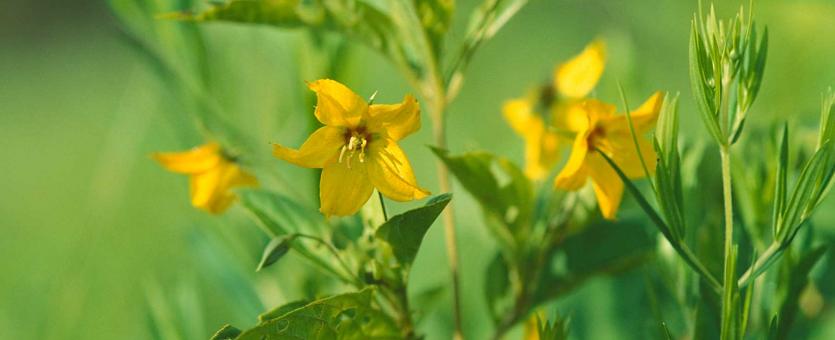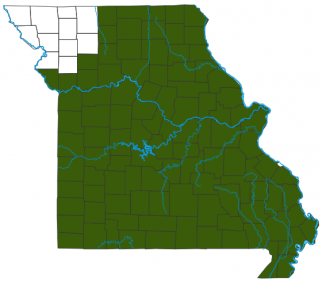
An upright, unbranched, perennial herb that can form small colonies by sending out long, slender runners (stolons). Flowers arise singly from upper leaf axils with 5 yellow, pointed lobes; showy but nodding. Blooms May–August. Leaves opposite, to 5 inches long, pale green on the undersurface, closely spaced; the lower ovate, becoming lanceolate higher up on the stem, much narrowed toward the base; upper leaves sessile or with very short leaf stems.
Similar species: Nine species in this genus are recorded for Missouri. Fringed loosestrife (L. ciliata) occurs nearly statewide, in moist or wet areas in open woods or open valleys. It reaches 3 feet tall and has petal lobes that are minutely fringed, hairy stems, and spreading flower clusters. The leaves are broadly ovate with 6-inch, long-hairy leaf stems.
Height: to 2 feet.

Scattered nearly statewide; absent from northwestern counties.
Habitat and Conservation
Banks of streams, rivers, and spring branches; margins of ponds, lakes, and sinkhole ponds; acid seeps, bottomland forests, rich upland forests, bottomland prairies, upland prairies, sand prairies, and glades; also pastures, railroads, and roadsides.
Human Connections
“Botanizing” is a fun activity, which, like most things worth doing, becomes more enjoyable as your knowledge increases. Learning to distinguish this plant from its relatives forces you to notice details, such as the characteristics of the leaf stems, you might have overlooked before.
Ecosystem Connections
Solitary bees in the genus Macropis specialize in visiting flowers in this genus. They collect not only the pollen but also oily secretions from glands on the petals and stamen filaments. These materials are combined and fed to their larvae. Males wait for foraging females near these flowers.

























